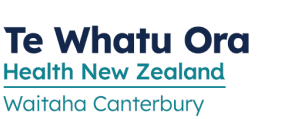What does it do?
Levonorgestrel is used to prevent pregnancy.
Before you start
- Tell your doctor if you have breast cancer.
How is it given?
Two implants are inserted under the skin in your upper arm by a health professional. They can stay in place for a maximum of 5 years.
Visit the Family Planning website for more information:
www.familyplanning.org.nz/advice/contraception/contraceptive-implant
www.familyplanning.org.nz/advice/contraception/implant-insertion-instructions
Can you take other medicines?
Tell your pharmacist or doctor about all medicines or treatments that you may be taking, including vitamins, herbal products (e.g. St John's wort) or recreational drugs.
What side effects might you notice?
| Side Effects | Recommended action |
|---|---|
|
Changes in periods |
Irregular bleeding is common in the first 3-6 months. This is not harmful and usually improves with time. After this, some women will not have any periods at all. |
|
Mood changes, headache Acne Weight gain Sore breasts Stomach upset Bleeding or itching at implant site |
Tell your doctor if troublesome |
If you notice any other effects, discuss them with your doctor or pharmacist.
Other information:
- Keep the implant area dry for a few days after it is inserted and follow your doctor’s instructions on when to remove the dressing and/or bandage.
- See your doctor if you cannot feel your implant, if you notice any changes around your implant, or if you become pregnant.
- Your implant does not protect you from sexually transmitted infections.
- You can ask to have your implant removed at any time. This must be done by your health professional – do not remove it yourself. The implant can be hard to remove in a small number of women; you may need more than one visit to the clinic if this is the case.
- You can get pregnant as soon as your implant is removed.
This leaflet contains important, but not all, information about this medicine.
Prepared by the MyMedicines Committee at Christchurch Hospital, Te Whatu Ora - Waitaha, New Zealand. March 2023
For more general information about this sheet and its contents, see: What does a My Medicines sheet cover?
Te Reo Māori
Te Reo Māori information sheets supported by Health Quality and Safety Commission New Zealand
Web links for this sheet in different formats
Click on buttons to copy web addresses for this leaflet:
If your browser does not automatically copy these links use its copy command instead.
About My Medicines
My Medicines Patient Information Leaflets (PILs) contain important, but not all, information about the medicines they describe.
For more information about the sheets, see: What does a My Medicines sheet cover?
My Medicines is developed by a team at Te Whatu Ora – Waitaha. Our team is made up of doctors, pharmacists, and a non-medical person to help us keep to plain language. We also discuss our information with specialist health professionals or groups when needed

